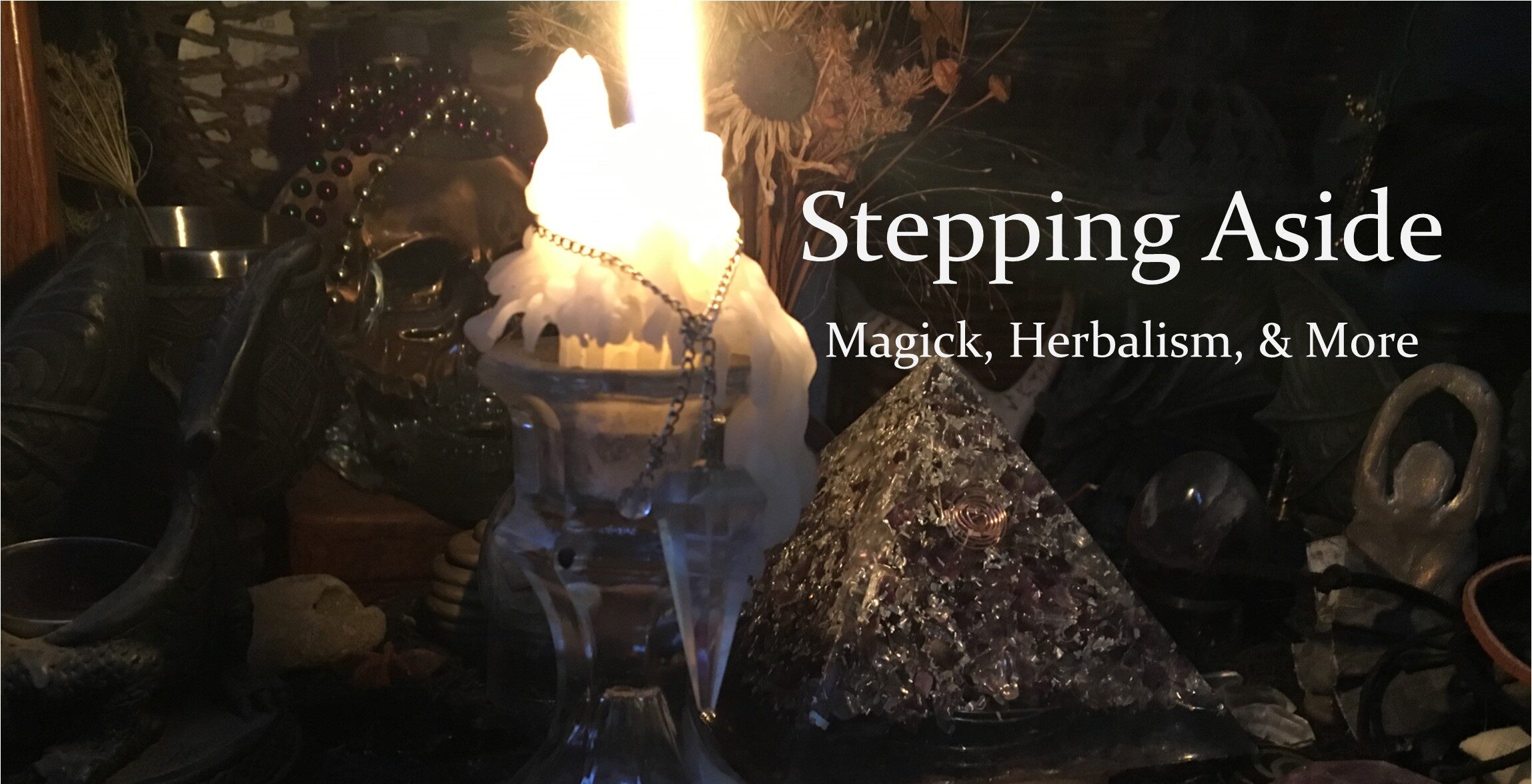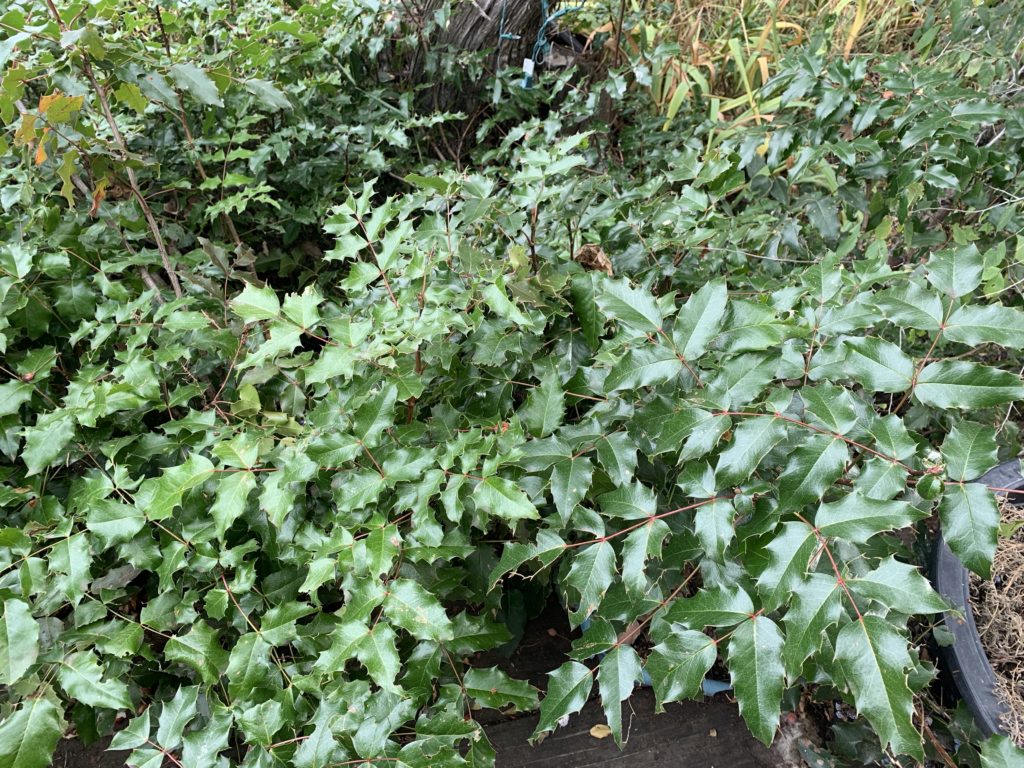
Oregon Grape
I have a bunch of Oregon Grape growing around my property which is a great herb to treat my rheumatoid arthritis. Traditionally, the rhizome or root is harvested, but a few years ago, I read an article by another herbalist who claimed that another herbalist had noted that the branches also appeared to contain the same yellow berberine alkaloid as the rhizome, had it tested, and found that it was just as medicinal.
So, that article gave me hope because I can’t stand the thought of digging up any of those beautiful plants to access the root. I mean, what if I butchered the plant to the point that it died? So, I was thrilled to see that someone else was trying another method and that it seemed to work well.
Similar to barberry, I use Oregon Grape, mahonia aquifolium, as part of a tincture I formulate to help keep my RA in remission. Considered an herb that balances and tones the liver, Oregon Grape purifies the blood of toxins by improving bile production through the liver and gallbladder. Oregon Grape can be combined with other herbs for an effective treatment for skin conditions, congestion, arthritis, and pre-menstrual symptoms.
I chose some larger branches to harvest some inner bark for the simple tincture I wanted to make. Simples are single-herb tinctures that can be added to teas or other simples to create a compound effect.
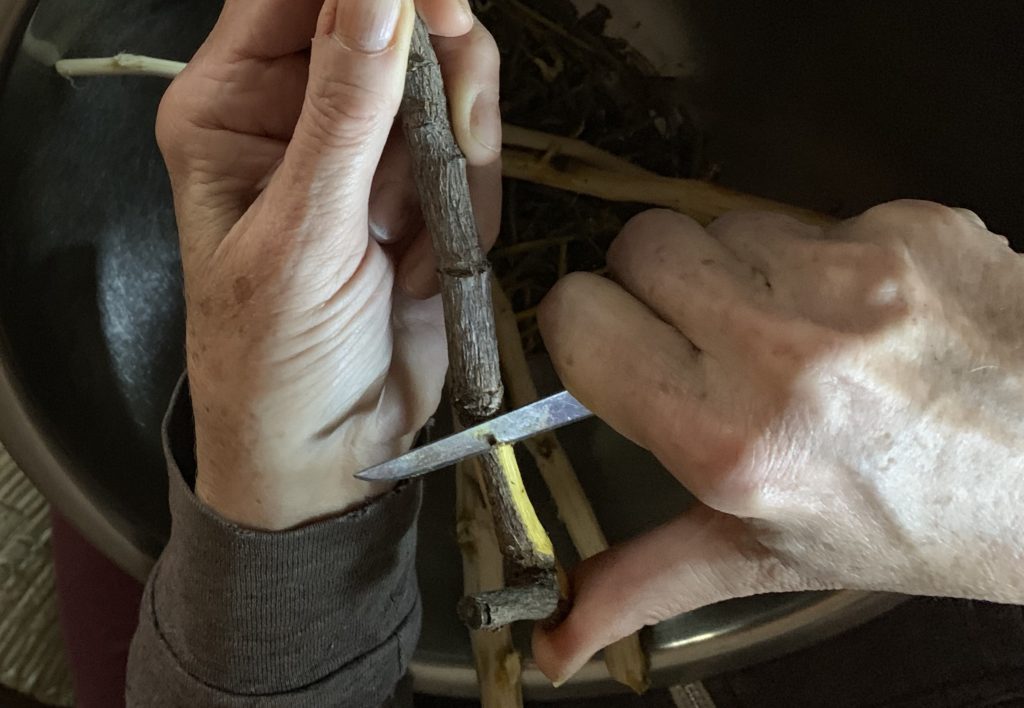
From there, I trimmed off the excess leaves and smaller branches and then began gently scraping the thin layer of outer bark from each branch revealing the yellow inner layer. The yellow layer is what I’m going to remove, so I scraped that layer, gently, into a bowl which from there I’ll add to a jar for tincturing.
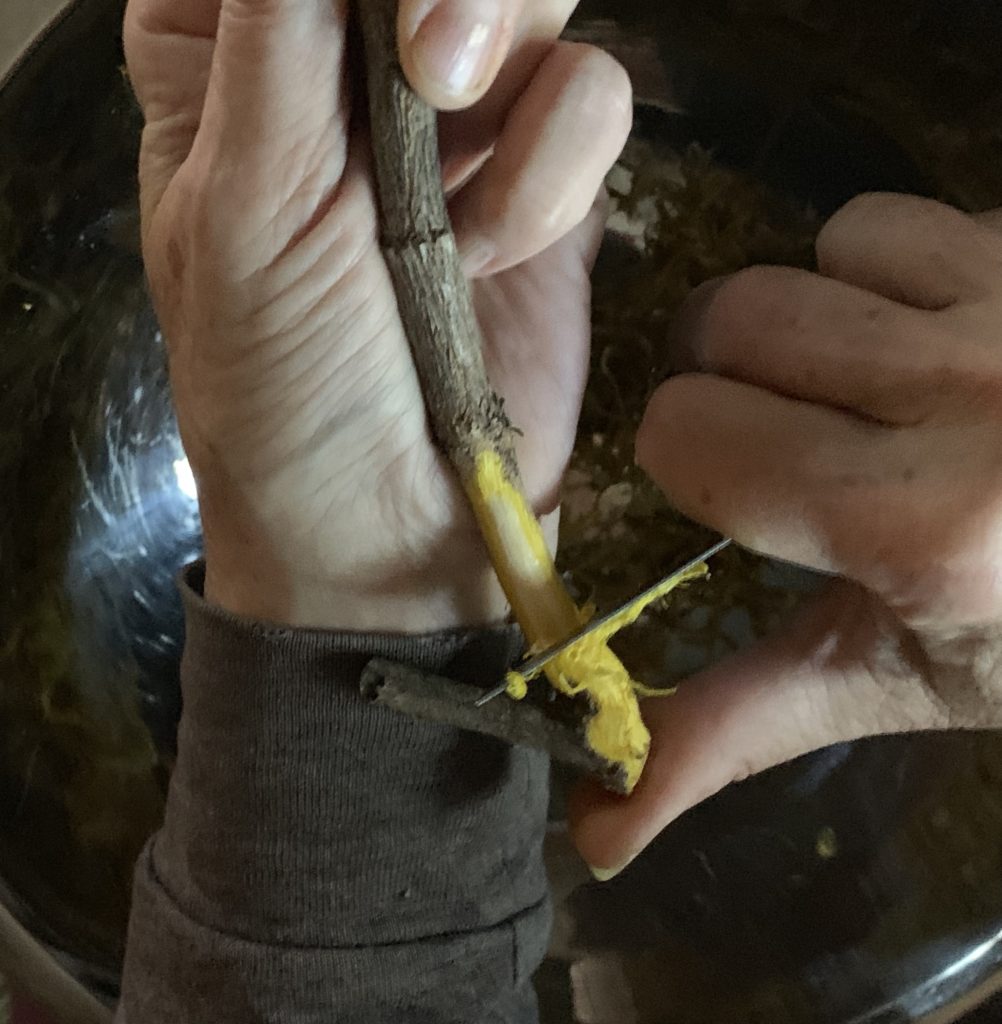
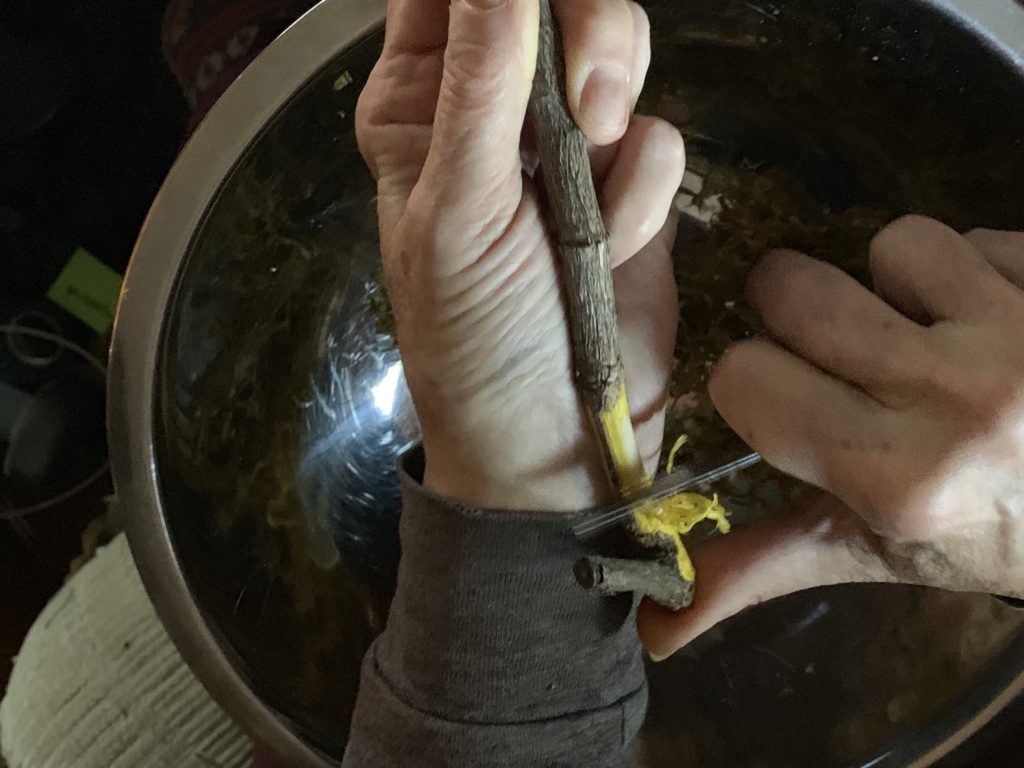
Because the shavings are so light, I added all of what I harvested to a small Mason jar and poured grain alcohol over it leaving a half-inch space at the top. I tightened the lid and ring, added the tincturing information to the lid as well as the start date and set it on the counter, shaking it daily (or when I remember), to soak for two weeks. After that time, I’ll strain it and put it back in the jar for later use.
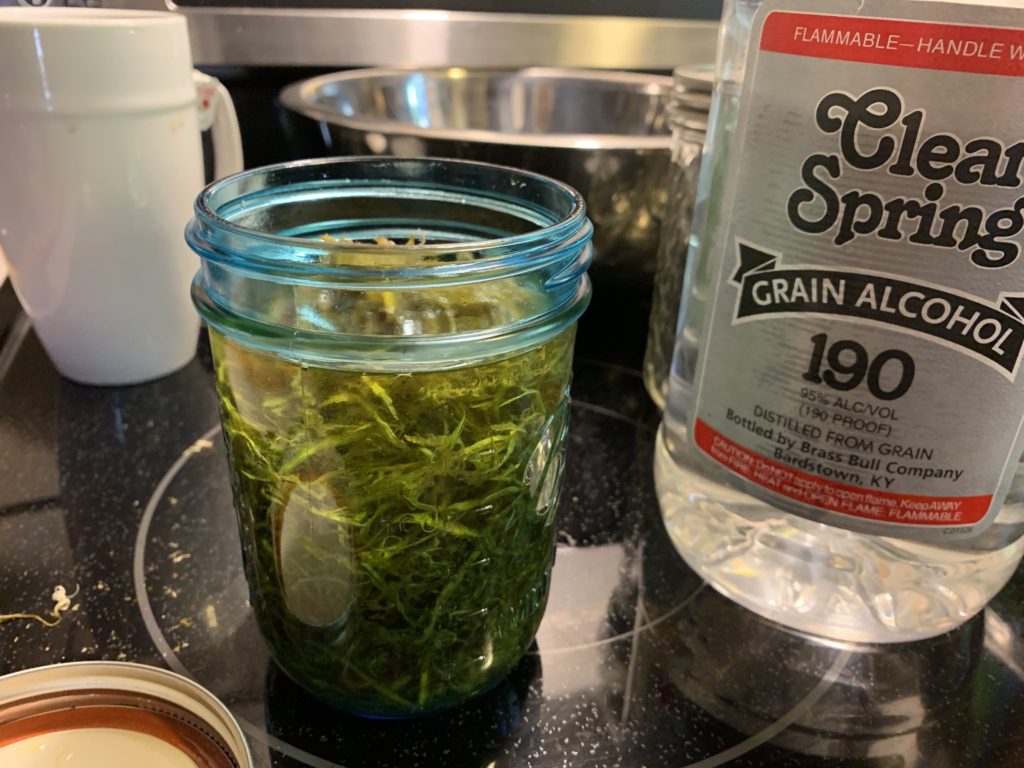
Note that when using grain alcohol, we’re using alcohol that is 190 proof, which is almost 100% alcohol, so it’s too strong to ingest (drink). When the tincture is done infusing, I’ll dilute it by at least half before use. I focus on smaller or micro-dosing tinctures so for me a typical dose is 5 drops although 10-30 drops to a cup of tea is often recommended.
But if you’re under the care of a physician, herbalist, or other medical/herbal practitioner, please check with that professional before adding Oregon Grape to your healing program, particularly if you’re already taking other medications to prevent any interference or reduction in their effectiveness.
Until next time…
Herbal Blessings to All!
If anyone intends to either quote something I've written, or intends to post any part of my work, including my videos, on any other site, please ask permission before doing so. Any reposting of my work without permission can be considered as copyright infringement, so please ask. And if I give permission, you MUST clearly reference my name as author and my website. No exceptions. The words an author writes are sacred. Unapproved use is not.
Thank you... Jan Erickson
